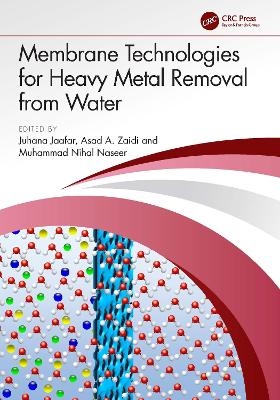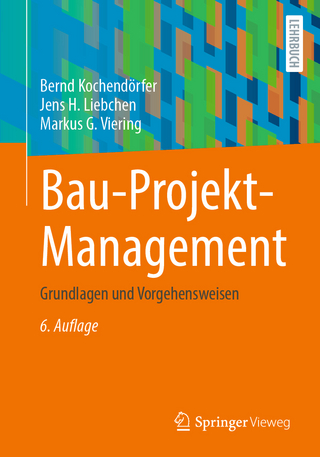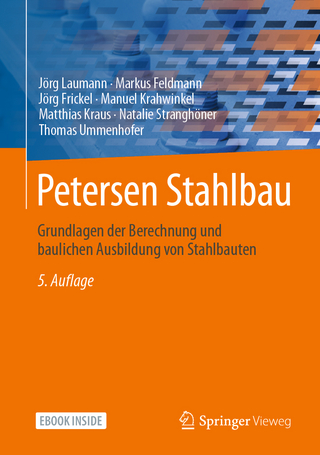
Membrane Technologies for Heavy Metal Removal from Water
CRC Press (Verlag)
978-1-032-35305-0 (ISBN)
This book offers lucid treatment of fundamental concepts related to potential applications and prospects of different membranes for wastewater decontamination by removing heavy metals. Divided into four sections, it provides an overview of different sources of water contamination, their impacts on human health and the environment, and compares traditional methods used to nullify these impacts. Further, it covers different mature membrane technologies such as polymeric membranes, poly-ceramic membranes, carbon-based membranes and many more, followed by pertinent case studies.
Features:
Focuses on the removal of heavy metals using membrane-based technologies
Discusses pertinent criteria to select suitable membranes
Includes feasibility studies and applications of different mature and emerging membranes
Describes heavy metals' occurrence and transport in an aqueous system with an overview of the adverse effects
Reviews challenges and opportunities associated with using different membranes
This book is aimed at graduate students and researchers in materials science, water engineering and wastewater treatment.
Juhana Jaafar is the Associate Professor in the School of Chemical and Energy Engineering, Universiti Teknologi Malaysia. She is also the Deputy Director of Advanced Membrane Technology Research Centre (AMTEC), a Higher Institute Centre of Excellent (HICOE) rewarded by the Ministry of Education Malaysia. Her outstanding outputs in research are evident from her receiving distinguished awards at National and International levels including World Class Professor award 2021 under the ministry of Education, Culture, Research and Technology of Indonesia, Grand Awards in Seoul International Invention Fair (SIIF 2019) and many more. She is also active in writing for scientific publication in high impact factor in international and national journals. To date, she has published more than 350 papers in ISI-indexed journals with H-index of 34. Asad A. Zaidi is Associate Professor at the Department of Mechanical Engineering, Faculty of Engineering Sciences and Technology, Hamdard University-Pakistan. He has also served as head of undergraduate program, assistant professor of thermal sciences and research supervisor at the National University of Sciences and Technology-Pakistan. He is an experienced researcher with a demonstrated history of working in the higher education industry. He is skilled in materials, renewable energy and low-cost water production technologies. His research interest spans over thermal modelling, energy system analysis and auditing, renewable energy resources assessment, energy-water-waste nexus, and water-biomass- wind and waves energies technology. He is an author or co-author of more than 65 papers in international refereed journals and conferences. He has also given several invited/plenary talks at international conferences. Muhammad Nihal Naseer is a Mechanical Engineer graduated from the National University of Sciences & Technology (NUST)-Pakistan. He started his research career in 2018 from Laboratory of Applied Sciences at NUST-Pakistan. His research interests lie in the area of thermal sciences, energy-water-waste-food nexus and nanotechnology. In 2019, he was research assistant in the NANOCAT research centre of University of Malaya-Malaysia. He has more than 10 publications on his credit published in peer review journals and conferences. He has published articles in reputed journals of the field such as Energy Reports. In addition, he has filed two innovations for patent and edited a book, Utilization of Thermal Potential of Abandoned Wells.
Section 1: Introduction
1. Sources of water contamination by heavy metals
2. Recent trend of promising membrane technologies for heavy metal removal from water and wastewater
3. Health risks associated with the presence of heavy metals in water
4. Nanotoxicology of metal oxides and their impacts on the environment
5. Theory of membranes: Types of membranes, working principle, and comparison
Section 2: Membranes for Heavy Metals Removal
6. Biopolymeric Membranes for heavy metal removal from water and wastewater
7. Bioremediation of heavy metals using the symbiosis of Hydrophytes and Metal-Resistant Bacteria
8. Comparison of different technologies for Boron removal from Seawater
9. Development and characterization of metal-chelating membranes fabricated using semi-interpenetrating polymer networks for water treatment applications
10. Graphene and graphene oxide-based nanomaterials as a promising tool for the mitigation of heavy metals from Water and Wastewater
11. Heavy metals removal from wastewater via photocatalytic membrane
12. Ionic liquid membrane technology for heavy metal removal from aqueous effluents
13. Life cycle assessment of membranes for removing heavy metals from water and wastewater
14. Nanofiber membranes for the hexavalent chromium removal and reduction
15. Nanoparticles for the Removal of Heavy Metals from Wastewater
16. Polymeric membranes for water and wastewater treatment
17. Role Of Bacterial Cell Transmembranes as a Biopolymer to Remediate Mercury in Industrial Wastewater
18. A review on the effect of ionic/zwitterionic materials on membrane performance for heavy metal removal application
| Erscheinungsdatum | 14.02.2024 |
|---|---|
| Zusatzinfo | 46 Tables, black and white; 80 Line drawings, black and white; 8 Halftones, black and white; 88 Illustrations, black and white |
| Verlagsort | London |
| Sprache | englisch |
| Maße | 178 x 254 mm |
| Gewicht | 825 g |
| Themenwelt | Technik ► Bauwesen |
| Technik ► Elektrotechnik / Energietechnik | |
| Technik ► Umwelttechnik / Biotechnologie | |
| ISBN-10 | 1-032-35305-8 / 1032353058 |
| ISBN-13 | 978-1-032-35305-0 / 9781032353050 |
| Zustand | Neuware |
| Informationen gemäß Produktsicherheitsverordnung (GPSR) | |
| Haben Sie eine Frage zum Produkt? |
aus dem Bereich


